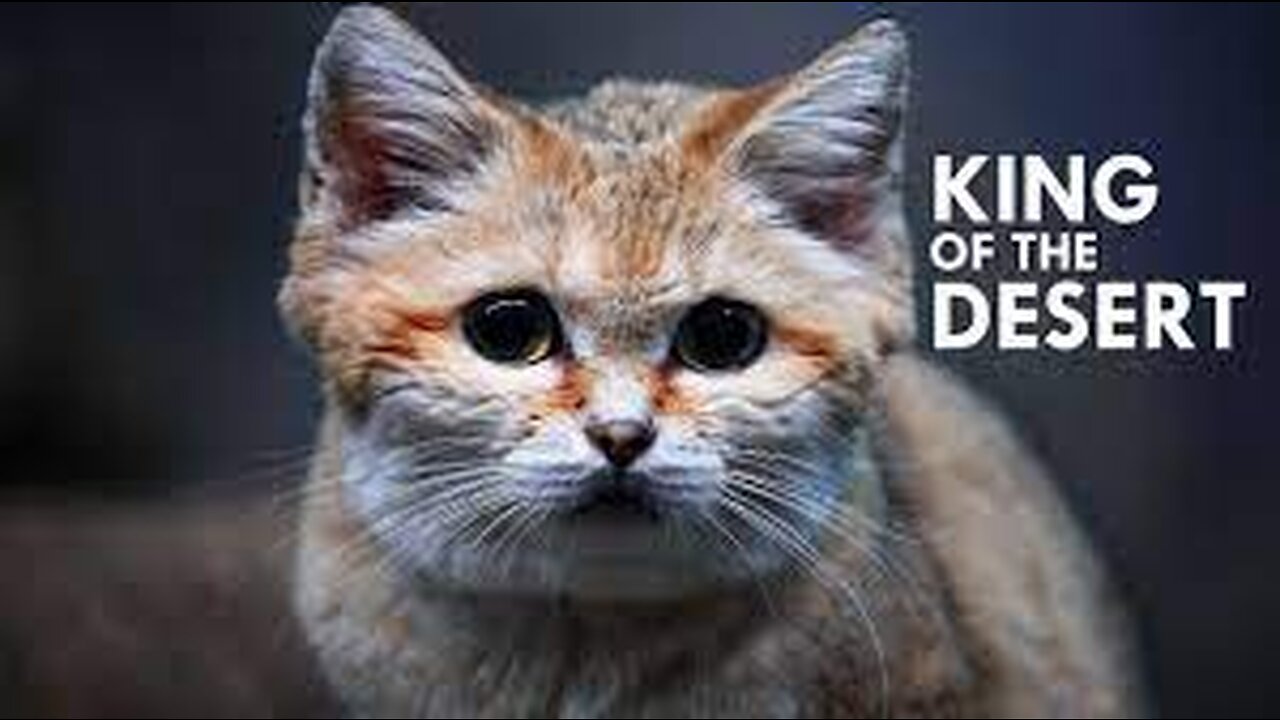Premium Only Content

Sand Cat: The King of the Desert | #Animallovers
Wildlife scientists have known the sand cat since its discovery in the Algerian Sahara in 1858. They named the kitty after the French Expedition leader, General Margueritte. The other common name is the sand-dune cat.
Today the kitty is seen in Morocco, Algeria, Niger, Chad, & Egypt. It is a small wild cat in the Felinae subfamily.
The kitty weighs about 2.7 kg. The length of the cat’s body is about 50 cm & its ringed tail is around 30 cm long.
The cat has sand-colored fur and a broad head with ears that point up & out. Fur covers its paws to protect its pads from the hot sand.
Habitat:
Sand cats live in the Sahara & Arabian deserts, but they are also present in Iran & Pakistan. They live in sandy & rocky desert areas, primarily flat terrain with small bushes & little grass.
The sand cat hides in underground burrows, out of the hot sun during the day.
Humans, wolves, snakes, and large birds are the predators of the sand cat.
Wildlife studies find that this kitty is not a territorial fighter. Instead, it takes turns sharing its burrow with its mates & sand cat mothers raising their young.
By Payman sazesh — camera trap, CC BY-SA 3.0, https://commons.wikimedia.org/w/index.php?curid=24849743
So what does the cat eat?
The night hunter, kitty kills & eats rodents, lizards, insects & some snakes.
Wildlife experts reveal that the cat does not drink water. Instead, it gets fluids by eating raw fresh, killed prey.
The researchers observed sand cats hunting young cape hare, hoopoe lark, desert monitor, sandfish, & venomous vipers.
On the IUCN Red List of endangered animals, they classify the sand cat as the least concerned species.
-
 LIVE
LIVE
Kim Iversen
22 hours agoSudden Floods Everywhere…Is Weather Being Weaponized?
10,054 watching -
 1:09:11
1:09:11
Roseanne Barr
1 hour ago"Bloodline of Cain" W/ Epstein Rape Survivor Audra Lynn | The Roseanne Barr Podcast #108
28.5K34 -
 LIVE
LIVE
Nerdrotic
2 hours agoFantastic Four Baby Steps V Superman's James Gunn, South Park Returns | Friday Night Tights 364
2,777 watching -
 2:14:01
2:14:01
Twins Pod
6 hours agoHodgetwins & Blaire White ROUND 2! | Twins Pod - Episode 75 - Blaire White
9.93K6 -
 LIVE
LIVE
Dr Disrespect
5 hours ago🔴LIVE - DR DISRESPECT - BATTLEFIELD BAD COMPANY 2 - FULL GAME
3,548 watching -
 LIVE
LIVE
Sarah Westall
54 minutes agoChance of War Increases in Sept, Genius Act War Bonds, NeoCons Surrounding Trump w/ Martin Armstrong
236 watching -
 LIVE
LIVE
LFA TV
18 hours agoLFA TV ALL DAY STREAM - FRIDAY 7/25/25
1,617 watching -
 1:06:06
1:06:06
vivafrei
4 hours agoTrump Lawyer Meets with Maxwell! Dems Can't Read! "Canadian" Man on the Street Identified? & MORE!
78.3K21 -
 2:07:13
2:07:13
Pop Culture Crisis
3 hours agoCelebrity DOOMSDAY PREPPERS, New Tradwife Pop Star? Pedro Pascal Online SMEAR CAMPAIGN | Ep. 885
13.1K3 -
 1:35:12
1:35:12
Tucker Carlson
5 hours agoAna Kasparian: Epstein Cover-Up, Israel Strikes Gaza Church, & the Great American Political Shift
79.1K212